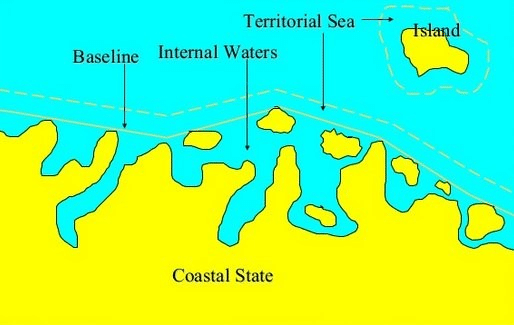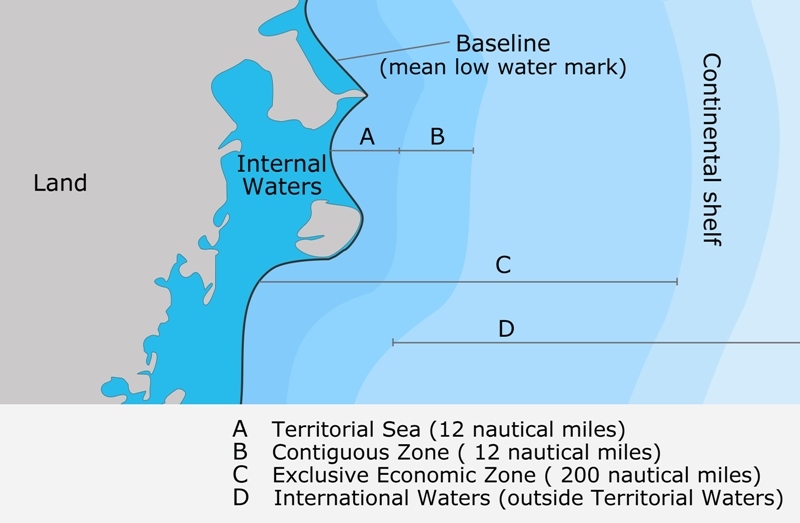baselines, coastal State, internal waters, International law of the sea, jurisdictional zones, What does at baseline mean?, What are the rules governing baselines?
A primary task of the law of the sea is to determine the spatial extent of the coastal State jurisdiction over the oceans. The seaward limits of each jurisdictional zone are measured from baselines. Thus rules concerning baselines are of particular importance in the law. In particular, rules governing straight baselines and bays merit serious consideration. Furthermore, attention must be devoted to the legal status of islands and low-tide elevations because the existence of these maritime features may affect the seaward limits of marine spaces under national jurisdiction.
(i) What are the rules governing baselines?
(ii) What are the problems associated with rules with regard to straight baselines?
(iii) What are the rules governing juridical bays in international law?
(iv) What is a historic bay and what are the elements of title to such a bay?
(v) What is the definition of an island?
(vi) What are the differences between islands, rocks and low-tide elevations?
In the international law of the sea, the scope of jurisdictional zones under national jurisdiction is to be determined on the basis of distance from the coast. Thus it is important to identify the line from which the outer limits of marine spaces under the national jurisdiction of the coastal State are measured. This line is called the baseline. At the same time, the baseline is the line distinguishing internal waters from the territorial sea. The distinction is important because the legal regime of internal waters differs from that of the territorial sea.
When considering how international law governs the limits of marine spaces, particular attention should be drawn to the tension between the necessary generality of law and the diversity of coastal configurations. As with all types of law, rules of the law of the sea must have a certain degree of generality in their scope. At the same time, as each coastal configuration differs, there is a need to take particular geographical elements into account.
The tension creates a difficult question in the relationship between a general rule and exceptions to the rule. On the one hand, strong emphasis on the generality of law may entail the risk of underestimating special interests of a coastal State in a particular geographical situation. On the other hand, allowance of too many exceptions to a general rule will eventually destroy the rule itself. Noting this question, the present chapter will examine rules of international law governing baselines and related issues.


What’s the difference between a mile and a nautical mile?
Nautical miles are used to measure the distance traveled through the water. A nautical mile is slightly longer than a mile on land, equaling 1.1508 land-measured (or statute) miles. The nautical mile is based on the Earth’s longitude and latitude coordinates, with one nautical mile equaling one minute of latitude.
source: The International Law of the Sea, Yoshifumi Tanaka


Foreign ships exercising the right of innocent passage through the territorial sea shall comply with all such laws and regulations and all generally accepted international regulations relating to the prevention of collisions at sea.